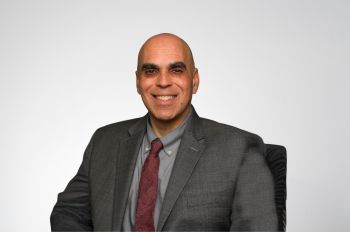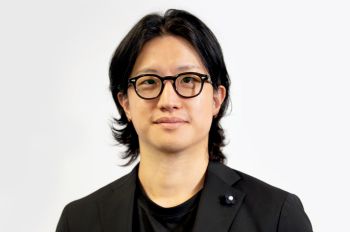Undergraduate Students Awarded Summer 2015 Armour R&D Fellowships
Seventeen Armour College of Engineering undergraduate students and their faculty mentors have been awarded Summer 2015 Armour R&D Fellowships. The program offers undergraduate engineering students the opportunity to gain hands-on research and development experience in the lab of a faculty mentor.
Armour R&D is an Armour College of Engineering Distinctive Education initiative that includes the Program for Undergraduate Research Education (PURE) and Mentored INovation and Development (MIND). Students selected to participate in PURE will have an opportunity to team with an IIT Faculty mentor on an engineering research project and gain valuable research experience. Those selected under the MIND program will work with a faculty mentor to develop technology based on research findings. Students will explore new applications of ongoing research and/or work towards the utilization of innovative technology.
Eleven students funded during the summer term are new to the program, while six students will continue working on projects started in prior semesters of Armour R&D. Students have been selected to participate in the program based on the quality of project proposals submitted. The proposals are reviewed and selected by Dean Natacha DePaola and the Distinctive Education Council.
Armour R&D will run for ten weeks, culminating with the Summer 2015 Armour R&D Expo to be held in August 2015. The students will also present their work at the 2nd Annual Armour R&D Expo to be held at the end of the Spring 2016 Semester. During these Expos, students will participate in a poster competition where they will share the results of their work and compete for awards.
The Summer 2015 Armour R&D projects are categorized under the four IIT Engineering Themes: Water, Health, Energy, and Security. These themes represent areas in which engineers can create solutions of global impact that advance society.
Health
Isabel Arias (BME, 3rd year) and Professor of Biomedical Engineering, Eric Brey, will complete the PURE project they have worked on during the Summer 2013, Spring 2014, and Spring 2015 semesters, Role of Hydroxyapatite (HA) and Tricalcium Phosphate (TCP) Nanoparticles on the Mineralization of Vascularized Scaffolds for Bone Tissue Engineering. The team will proceed by examining the role of HA and TCP nanoparticles on the mineralization of their vascularized constructs in vitro. These analyses will allow the team to better understand the optimal environment for the formation of vascularized bone in vitro. The long-term goal of the research is to engineer vascularized bone grafts for patients who have suffered trauma, congenital defects, or cancer.
Ritika Dhawan (BME, 4th year) and Professor of Biomedical Engineering, Eric Brey, will begin work on their MIND project 3D Printing of Single Path PLA Structures for Biomedical Engineering Applications. Although Dhawan has participated in Armour R&D during the Spring 2014 and Fall 2014 semesters, she is teaming up with Dr. Brey to work on a project this summer that she began while she was in ENGR 497: Introduction to Research Methods. The team will work to generate poly(lactic acid) (PLA) based materials with unique mechanical behavior based on patterned structure. The team hopes these structures can be used to create degradable polymer stents.
Syeda Fatima (BME, 3rd year) and Associate Professor of Biomedical Engineering, Derek Kamper, will begin work on their MIND project Use of Prosthetic Glove for Hand Rehabilitation Following Stroke. The goal of the project is to develop an exo-skeleton glove to improve the hand movement of stroke survivors. Fatima will focus on creating the device's graphical user interface and the underlying code to perform analysis of the neuromechanical evaluation data.
Thimmaiah Honaganahalli (ChE, 5th year) and Professor of Chemical Engineering and Director of the Engineering Center for Diabetes Research and Education, Ali Cinar, will begin work on their PURE project Integrated Multivariable Adaptive Artificial Pancreas. The team will collect data acquired from clinical experiments to refine and improve the efficacy of insulin delivery to patients with Type 1 Diabetes Mellitus via closed-loop (CL) artificial pancreas (AP) control systems. The present phase of the project will focus on improving the hypoglycemia early alarm module that regulates glucose concentration and prevents hypoglycemia.
Omar Alhaj Ibrahim (BME, 3rd year) and Assistant Professor of Biomedical Engineering, Kenneth Tichauer will begin work on their PURE project Moving Noninvasive Lymph Node Biopsy toward the Clinic: Optimization of Imaging Protocol and Analyses. Through their research the team aims to identify the optimal imaging protocol for the paired-imaging of sentinel lymph nodes (PAISLY) using a customized clinical lymphatic fluorescent imaging system. They hope to demonstrate that PAISLY, a non-invasive diagnostic tool, is safer and more accurate at detecting cancer cells in tumor draining lymph nodes than standard sentinel lymph node biopsy.
Adriane Walther (BME, 4th year), Associate Professor of Biomedical Engineering, Jennifer Kang-Mieler, and Assistant Professor of Biomedical Engineering, Kenneth Tichauer will begin work on their PURE project Quantitative Retinal Blood Flow Mapping Videoangiography Using Tracer Kinetic Modeling. Through their research, the team hopes to use blood flow as a diagnostic tool for diabetic retinopathy in humans by applying kinetic modeling to fluorescein video angiography. Research into better diagnostic measures for the disease can lead to early detection and help prevent blindness in diabetic patients.
Conner Wiebell (BME, 4th year) and Assistant Professor of Biomedical Engineering, Kenneth Tichauer will begin work on their PURE project The Optimization of Imaging Agents in the Progression of Noninvasive Lymphnode Biopsy Towards Clinic. The team seeks to further explore the “paired-agent” molecular imaging strategy developed by Dr. Tichauer. They will work to identify the optimal imaging agents for the paired-imaging of sentinel lymph nodes (PAISLY). They hope to bring this method to clinic for use in detecting the presence of metastatic cells in tumor-draining lymph nodes of patients with breast cancer.
Olha Zvarych (ChE, 2nd year) and Johnson Polymer Professor and Director of the Center for Complex Systems Dynamics, Fouad Teymour, will continue the MIND project they started in Fall 2014, Development of Engineering Devices for Affordable Nutrition. During the fall semester, the team confirmed that rapid growth can be achieved using airlift photobioreactors in a process they call kinetic hydroponic farming. During this semester they hope to develop a model, using COMSOL software, to predict the hydrodynamic behavior of different types of seeds in the modified airlift reactors and to develop new reactor designs that eliminate liquid, air, and solids circulation problems. This project could help reduce the number of people suffering from malnutrition all over the world.
Energy
Kevin Boldt (AE, 4th year) and Professor of Materials Engineering, Sammy Tin, will begin work on their PURE project Effect of Heat Treatment on the Grain Microstructure of Ni-base Superalloys. The team’s goal is to improve the structural properties of polycrystalline Ni-base superalloys for their use in high stress turbine applications. They will explore how different heat treatments affect the superalloys mechanical properties. Through this research they hope to reduce fuel consumption and minimize undesirable emissions in gas turbine systems.
Nabil Boutaleb (ME, 2nd year) and Associate Professor of Mechanical & Aerospace Engineering, Francisco Ruiz, will begin work on their MIND project An Alternative to Solar Cell Technology. The team hopes to develop a solar-powered stirling engine to produce electricity that is more efficient than current solar cell technology. They will seek to develop an engine that uses a solar collector to heat a liquid or gas to warm the engines hot pump, instead of the traditional method of using solar collectors to directly heat the engine. The team will hook this engine up to a generator with the hope of producing electricity more efficiently than solar cells.
Bader Jarai (ChE, 3rd year), S.C. Johnson Professor of Chemical Engineering and Director of the Center for Complex Systems and Dynamics, Fouad Teymour and Part-time Faculty, Omar Khalil, will continue work started during the Spring 2015 semester for their PURE project Study of Physical and Biological Interactions in Algae Biocomposites. The team has recently discovered that growing algae in biocomposites with filamentous cynobacteria species allows for the easy separation and recovery of algal biomass in a photobioreactor, a major hurdle in the commercialization of the algal biofuel process. The aim of the current phase of the project is to obtain a deeper understanding of the interaction between the bacteria and the algae in the composite developed, in order to optimize the bioflocculation process as a cultivation technique for use in biodiesel production.
Andrea Velazquez (MS, 4th year) and Professor of Materials Engineering, Sammy Tin, will begin work on their PURE project Analysis of Phase Equilibria of Chromium Carbides in Nickel-base Superalloys. Throught their research, the team hopes to improve the performance and structural properties of Nickel-base alloys intended for use in hot section turbine engine components. Improvements of these critical alloys can translate to higher thermal efficiencies and lower fuel consumption.
Nathan Zwartz (ME, 4th year) and Lecturer of Mechanical and Aerospace Engineering, Roberto Cammino, will begin work on their MIND project, Continuous Power Transmission. They will begin the development of a new class of mechanical transmission capable of transferring continuous and variable torque efficiently. The team hopes this research will lead to improved efficiencies of combustion engines that have lower production costs due to the lack of expensive external converting components.
Security
David Finol (AE, 3rd year) and Ankit Srivastava, Assistant Professor of Mechanical Engineering, will continue work on their PURE project from Summer 2014 and Fall 2014, Active Flutter Suppression on a Flying-Wing Vehicle through Magnetic Tuned- Mass Damping. The team will test the effectiveness of a Tunned-Mass Damper (TMD) system for flutter mitigation in high-aspect ratio aircraft configurations in a wind-tunnel using a model of Lockheed Martin’s Body Freedom Flutter (BFF) vehicle. This research has civilian and military applications, making aircraft safer to fly.
Francisco Flores (AE, 4th year) and Assistant Professor of Mechanical and Aerospace Engineering, Seebany Datta-Barua will begin work on their PURE project Numerical Computation of Lagrangian Coherent Structures for Ionospheric-Thermospheric Flows. They seek to design an algorithm to calculate the Lagrangian Coherent Structure (LCS) locations given an ionospheric or thermospheric flow. LCSs can help predict the flow of the layers of the atmosphere. Changes in the atmosphere, especially during solar storms, can negatively affect Global Positioning Systems, radio communication systems, and low-Earth orbiting spacecraft. Better predicting these changes will result in more consistent and secure use of these systems and devices.
Soowon Kim (ME, 4th year) and Research Assistant Professor of Mechanical and Aerospace Engineering, Mathieu Joerger, will begin their PURE project Experimental Laser Scanner Data Analysis for High-Integrity Measurement Error Modeling. This work aims at establishing new and robust statistical measurement error models for two-dimensional and three-dimensional laser scanners. These models will be used to help robots navigate in their environment and to guarantee the security and safety of humans interacting with these robots.
Energy / Security
Chaemoon Lee (ME, 5th Year) and Associate Professor of Mechanical Engineering, Matthew Spenko, will begin work on their PURE project Autonomous Navigating Robot System. The team will work to create a robotic system that will be able to navigate autonomously in order to inspect utility lines or search for survivors in disaster situations. The first step of their project is to control the robot’s motion using Robot Operating System (ROS). They will then research techniques to optimize the robot’s ability to position itself within the environment.




